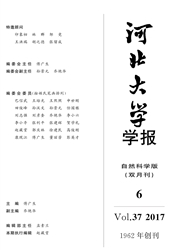

 中文摘要:
中文摘要:
综述了非晶/微晶相变区硅基薄膜的微观结构、光电特性及其在太阳能电池中的应用进展.稳定优质的宽带隙初始晶硅薄膜处于非晶/微晶相变区的非晶硅一侧,其相比于非晶硅具有更高的中程有序性和更低的光致衰退特性.低缺陷密度的窄带隙纳米晶硅薄膜处于非晶/微晶相变区的微晶硅一侧,有效钝化的纳米硅晶粒具有较高的载流子迁移率和较好的长波响应特性.基于上述相变区硅薄膜材料的叠层电池已经达到13.6%的稳定转换效率.掺锗制备的硅锗薄膜可进一步降低薄膜的带隙宽度,引入相变区硅锗合金薄膜后,三结叠层电池初始效率已经达到16.3%,四结叠层太阳能电池理论效率可以超过20%.
 英文摘要:
英文摘要:
The microstructure,optoelectronic property and the app SiGe alloy films near phase transition from amorphous to microcrystal lcat ine ion in solar cell of Si films and are outlined.The proto-crystalline Si films (proto-Si) with improved medium range order are grown at the amorphous phase side of the phase transition region,showing remarkable stability against light soaking.The high quality nano-crystal- line Si films (nano-Si) with low defect density are grown just at the microcrystalline phase side of the phase transition region, showing high carrier mobility and higher long wavelength response due to the em- bedded Si nano-crystals.The triple-junction solar cell has achieved stable efficiency of 13.6~/00 by using pro- to-Si,nano-Si and microcrystalline Si(uc-Si) as absorber layer.Increasing Ge content can further decrease the optical band gap of SiGe alloy film.By introducing SiGe alloy films as the absorber layer of sub-cell,the triple-junction stacked solar cell attains an initial cell efficiency of 16.3 %, and the theoretical conversion efficiency of simulated quadruple junction solar cell can reach 20%.
 同期刊论文项目
同期刊论文项目
 同项目期刊论文
同项目期刊论文
 期刊信息
期刊信息
